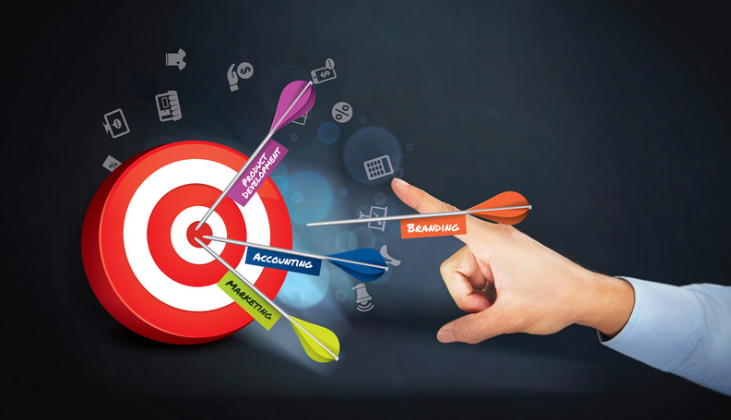
Introduction to Personalization Strategies in Conversion Optimization
In the ever-evolving landscape of digital marketing, the concept of personalization has taken center stage as a powerful tool for boosting conversion rates and enhancing the overall customer experience. Today, we delve into the profound impact of personalized experiences on conversion optimization strategies and how it has shaped the digital landscape.
Historical Evolution of Personalization in Marketing
To truly appreciate the significance of personalization in modern conversion strategies, it’s essential to trace its historical evolution within the realm of marketing. Over time, personalization has transformed from a mere marketing tactic to a pivotal element in conversion optimization, significantly improving the likelihood of conversions and creating meaningful customer journeys.
From the early days of email marketing, where personalized content was a novel approach, to the present day, where businesses harness the power of advanced algorithms and data-driven decisions, personalization has come a long way. Today, it not only influences the way we tailor our marketing campaigns but also plays a crucial role in enhancing customer satisfaction and engagement levels.
As we journey through this article, we’ll explore effective personalization strategies, dive deeper into the conversion rate optimization process, and shed light on how personalization impacts various aspects of the customer experience. Moreover, we’ll examine the role of AI-powered tools, recommendation engines, and predictive analytics in delivering personalized experiences that resonate with individual users.
Join us on this exploration of personalization in the digital marketing world, where we’ll unravel the potential of personalized messaging, product recommendations, and dynamic content delivery. Get ready to discover how personalization can significantly improve your conversion goals, all while keeping your target audience at the forefront of your marketing strategy.
Personalization Strategies in Conversion Optimization: A Comprehensive Overview
As the digital landscape continues to evolve, it becomes increasingly evident that personalized experiences are the key to unlocking higher conversion rates and more satisfied customers. In this section, we will embark on a deep dive into various personalization strategies and explore their direct impact on conversion rates.
Data-Driven Personalization: The Heart of Conversion Success
At the core of any effective personalization strategy lies a treasure trove of customer data. Leveraging this data is not just a trend; it’s the heartbeat of conversion success in today’s digital marketplace. By harnessing the power of data, businesses can craft personalized experiences that resonate with their target audience and, in turn, drive them closer to becoming loyal customers.
The importance of data-driven personalization cannot be overstated. It allows you to gain valuable insights into customer behavior, preferences, and intent. Armed with this information, you can tailor your marketing efforts to deliver the most relevant content, messages, and offers at precisely the right moment in the customer’s journey.
Harnessing the Power of Personalization
One effective personalization strategy involves utilizing a customer’s purchase history and behavior to make personalized product recommendations. Imagine a scenario where a customer visits your e-commerce website. Through the power of data-driven insights, you can recommend products that align with their previous searches and purchases. This not only increases the chances of conversion but also enhances the overall online experience.
Moreover, in the realm of email marketing, personalization goes beyond simply addressing the recipient by their first name. It extends to crafting personalized emails that contain content tailored to the individual’s interests and needs. By doing so, you not only reduce bounce rates but also increase the likelihood of conversions through your email campaigns.
The Role of Predictive Analytics and AI-Powered Tools
To stay competitive in the digital marketing arena, businesses are turning to predictive analytics and AI-powered tools. These sophisticated technologies analyze vast amounts of data, including previous searches, purchase history, and user behavior, to make personalized recommendations that align with the customer’s preferences.
Furthermore, tools like Google Analytics provide deep insights into user behavior, allowing you to make informed decisions that optimize your conversion funnel. By understanding how users interact with your website, you can refine your marketing efforts, fine-tune your landing page content, and ensure a seamless user experience.
Innovative Techniques in Personalization for Higher Conversions
In this fast-paced digital era, personalization techniques are continually evolving to meet the dynamic needs of businesses and customers alike. In this section, we will explore cutting-edge personalization techniques that are reshaping conversion optimization strategies.
The Power of Contextual Experience
One of the most innovative approaches to personalization is the utilization of contextual experience. By considering the context in which a user interacts with your website or app, you can deliver highly relevant and meaningful experiences. For instance, you can tailor content based on the user’s location, device, or even the time of day. Such personalized experiences resonate more deeply with users and increase the chances of conversion.
AI-Driven Customer Experiences
The integration of Artificial Intelligence (AI) has revolutionized personalization efforts. AI-powered tools can now analyze vast amounts of user data to provide personalized recommendations and insights at a deeper level than ever before. These tools not only enhance user engagement but also help you achieve your revenue goals.
Social Proof and Personalization
Social proof, in the form of customer reviews and ratings, has long been recognized as a powerful strategy for building trust and influencing purchase decisions. When combined with personalization, it becomes even more potent. Displaying reviews from customers with similar preferences or behaviors can encourage conversions by providing valuable insights and recommendations.
Effective Messaging Strategies
Personalized messaging is not limited to just email subject lines. It extends to dynamic content delivery across various channels. By tailoring your marketing communication to the individual user’s preferences, you can significantly boost click-through rates and drive conversions. Crafting compelling subject lines and messaging matrixes can make your marketing campaigns more effective and engaging.
Overcoming Challenges in Personalization
While personalization holds tremendous potential, it also comes with its fair share of challenges. Identifying and addressing these common hurdles is crucial for the successful implementation of personalization strategies.
The Need for Explicit Consent
With the growing concern over data privacy, obtaining explicit consent from users before implementing personalization strategies is essential. Users want to know how their data will be used and whether it will be shared. Being transparent and providing options for users to opt in or out of personalization is a key benefit.
Balancing Personalization and Privacy
Respecting user privacy while delivering personalized experiences can be a considerable challenge. Striking the right balance is essential to avoid any sense of intrusion or discomfort. Businesses need to ensure that their personalization efforts align with regulatory guidelines and user expectations.
The Future of Personalization
As we continue to explore innovative personalization techniques and overcome challenges, the future of personalization in conversion optimization looks promising. With advancements in AI, the ability to create tailored experiences for individual users will become even more sophisticated. Businesses that invest in personalization now are likely to see substantial growth in their online revenue and customer engagement.
In the next section, we will delve into specific personalization tools and strategies, including how they can drive conversions and enhance the overall user experience. Join us in this exciting journey through the dynamic world of personalization!
Tools and Technologies Powering Personalization
In the ever-evolving landscape of digital marketing, staying ahead of the curve requires harnessing the latest tools and technologies that facilitate effective personalization. In this section, we will review some of the most innovative tools and technologies that empower businesses to deliver personalized experiences that convert.
Optimizely Personalization
Optimizely Personalization is a robust platform that enables businesses to create tailored experiences for their users. This tool leverages AI-driven customer segmentation, allowing you to deliver highly personalized content, messages, and offers. By using Optimizely Personalization, you can optimize your conversion funnel and drive conversions effectively.
Advanced Search Platforms
For e-commerce giants and businesses with extensive product catalogs, advanced search platforms are indispensable. These platforms utilize AI and predictive analytics to understand user intent and deliver relevant search results, helping users find what they’re looking for quickly. By offering actionable search results and personalized product recommendations, businesses can significantly improve conversion rates.
Exclusive Offers and Discounts
Implementing exclusive offers and discounts based on user behavior is another effective strategy. Personalization can help you identify individual visitors’ preferences and reward them with exclusive discounts that cater to their interests. This strategy not only boosts conversions but also fosters customer loyalty.
Measuring the Success of Personalization Strategies
Evaluating the impact of personalization on conversion rates is essential to refining your strategies and optimizing your efforts. Here are some techniques for effectively measuring the success of your personalization strategies:
Conversion Events and Goals
Define specific conversion events and goals that align with your business objectives. This could include completing a purchase, signing up for a newsletter, or downloading a resource. Track these events to gauge the effectiveness of your personalization efforts.
Leverage Data-Driven Insights
Leverage data-driven insights from tools like Google Analytics to monitor user behavior and interactions. Analyze the data to identify trends, such as increased engagement or higher conversion rates, that can be attributed to personalization.
Customer Segmentation Analysis
Segment your customer base based on various criteria, such as demographics, behaviors, and preferences. Compare the conversion rates of different customer segments to determine which segments benefit most from personalization.
Positive Reviews and Customer Feedback
Monitor customer reviews and feedback to assess their satisfaction levels with your personalized experiences. Positive reviews and feedback can serve as indicators of successful personalization strategies.
In the ever-evolving digital landscape, personalization is not just a strategy; it’s a necessity for businesses seeking to thrive. By staying up-to-date with the latest tools and technologies and measuring the impact of your personalization efforts, you can unlock higher conversion rates, boost customer engagement, and foster lasting customer loyalty.
Future Trends: The Next Frontier in Personalization and Conversion Optimization
As we’ve journeyed through the intricate world of personalization in conversion optimization, it’s clear that this dynamic field continues to evolve at a rapid pace. To wrap up our exploration, let’s peer into the crystal ball of digital marketing and predict some future developments in personalization strategies.
AI-Driven Customer Experiences Reimagined
The future of personalization will undoubtedly be intertwined with AI-driven customer experiences. We can expect even more sophisticated AI-powered tools that can analyze not only historical data but also real-time user behavior. This real-time analysis will enable businesses to adapt their personalization efforts on the fly, making interactions with users more seamless and relevant.
User Privacy and Ethical Personalization
With growing concerns over data privacy, the future of personalization will also prioritize user consent and ethical practices. Businesses will need to find innovative ways to deliver personalized experiences while respecting user privacy and gaining explicit consent for data usage. Transparency and trust will be paramount.
Hyper-Personalization
The concept of hyper-personalization will take center stage. Instead of generalized segments, businesses will aim to create truly individualized experiences for each user. This will involve the use of advanced algorithms and predictive analytics to deliver content, offers, and recommendations tailored to a user’s individual preferences at a granular level.
Conclusion
In conclusion, personalization has emerged as a transformative force in conversion optimization. By crafting personalized experiences, businesses can boost conversion rates, enhance customer satisfaction, and foster long-term loyalty. It’s not just a trend; it’s a strategic imperative for digital businesses.
To succeed in the digital landscape, businesses must stay informed about the latest tools and technologies, overcome challenges, and measure the impact of their personalization strategies. As we look to the future, the continued evolution of AI-driven experiences, ethical practices, and hyper-personalization will redefine the boundaries of what’s possible.
Embrace the power of personalization, adapt to the changing digital landscape, and watch as your conversion rates soar, your customer engagement deepens, and your business thrives in the world of tomorrow.











